什么是服务器架电池?
如果您一直在研究现代储能, 特别是对于太阳能或备用电源, 您可能会遇到“服务器架电池”一词。" 他们到底是什么, 为什么它们成为建立可靠和可扩展能源系统的专业标准?
服务器架电池是高性能锂电池, 通常使用安全且持久的48V LFP (铁磷酸锂) 化学, 以标准化的19英寸宽格式建造. 该设计允许电池模块整齐,安全地安装 (“架”) 进入服务器机柜. 它们是空间效率的模块化构建块, 有组织, 并易于扩展电池储能系统 (贝斯).
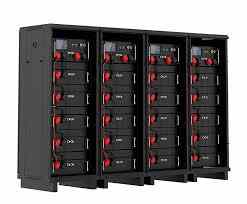
在GYCX太阳能, 我们的 48v 机架安装电池 解决方案是我们设计的先进能源系统的核心. 他们为韩国及以后的客户提供强大的, 灵活的, 和未来的能源独立基础. 让我们回答有关使用这些电池建立系统的一些最常见的问题.
如何连接 4 电池可获得48V?
过去建造48V电池库的一种常见方法是使用较小的, 更常见的电池. 这是怎么做的, 与使用现代48V机架电池模块相比?
从四个单独的电池创建一个48V系统, 您必须使用四个 相同的12V电池 并用电连接 串联. 这意味着将它们接线: 积极 (+) 第一个电池的端子连接到负 (-) 第二, 积极 (+) 第二个连接到负面 (-) 第三, 等等. 剩下的开放端子的总电压为48V.
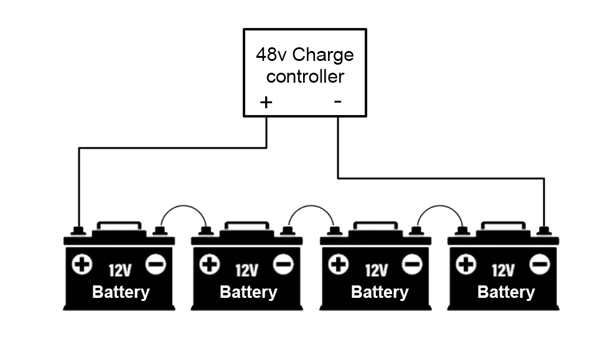
深入潜水: 系列布线和现代解决方案
连接电池串联需要仔细注意细节:
- “相同的" 规则: 这是最关键的部分. 串联连接时, 所有四个12V电池 必须是相同的 在化学中 (例如, 所有LFP或所有年度股东大会), 放大器小时 (啊) 容量, 品牌, 和, 理想情况下, 年龄和制造批次. 使用不匹配的电池会导致严重的失衡, 导致性能不佳, 较弱的电池过早故障, 和潜在的安全危害.
- 接线路径: 您可以创建一条单一的路径,使电流流经所有电池. 最终的48V输出是从链中第一个电池的主要正端子和最后一个电池的主要负端子.
- 现代优势: 这是现代的地方 48v 机架安装电池 模块显示其值. 我们的一个模块是 已经 预先设计的48V单元.
- 简单: 您不必担心复杂的系列布线或不匹配细胞不匹配的风险.
- 安全: 每个48V模块包含其自己的高级电池管理系统 (电池管理系统) 完美平衡所有内部细胞, 在12V电池的DIY系列串中要困难得多.
- 可扩展性: 增加您的能源能力, 您只需并行添加另一个48V模块, 这是一个更安全,更简单的连接.
当你 能 从四个12V电池制作48V银行, 使用专用的48V模块是更安全的, 更简单, 和更专业的方法.
需要多长时间 48 Volt 100AH电池最后?
48V 100AH电池是住宅太阳能存储非常受欢迎的. 这是大量的能量, 但是它实际上可以为您的房屋供电多久? 答案完全取决于您的电力消耗.
A 48V 100AH电池 商店 4,800 瓦时 (瓦时) 或者 4.8 千瓦时 (千瓦时) 能量的. 通过将该总能量除以您的电气负载来计算最后的时间 (以瓦为单位). 例如, 它可以为连续的 480-瓦特负载大约 10 小时, 或打火机 200-瓦特负载大约 24 小时.
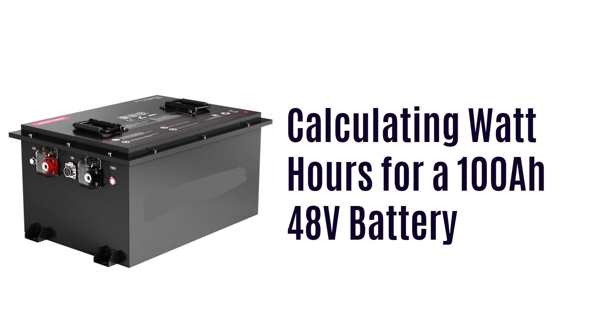
深入潜水: 计算您的运行时
让我们走过简单的数学:
步 1: 在瓦特时找到总能量 (瓦时)
- 公式:
Energy (Wh) = Voltage (V) x Capacity (Ah) - 计算:
48V x 100Ah = 4,800 Wh(或者 4.8 千瓦时)
步 2: 根据您的负载计算运行时
- 公式:
Runtime (Hours) = Total Energy (Wh) / Load (Watts)
韩国家庭的示例场景:
- 基本负载 (大约. 300瓦): 假设在中断期间, 您正在运行高效冰箱, 一些LED灯, 您的互联网路由器, 并为手机充电.
4,800 Wh / 300 W = 16 hours
- 中等负载 (大约. 800瓦): 您将电视和台式计算机添加到Essentials.
4,800 Wh / 800 W = 6 hours
- 重负荷 (大约. 2,000瓦): 您决定运行便携式空调或高功率设备.
4,800 Wh / 2,000 W = 2.4 hours
这就是为什么我们的GYCX太阳能 48v 机架安装电池 系统是模块化的. 100AH (4.8千瓦时) 模块是一个很棒的起点, 但是,如果您需要更长的运行时间, 我们可以轻松地添加第二或第三个模块,并平行于双重或三倍的容量.
48V电池需要多少个太阳能电池板?
你有你的 48V电池 系统; 现在您需要用太阳能收费. 您如何尺寸的太阳能电池板,以确保每天有效地充电电池?
所需的太阳能电池板的数量取决于电池的容量, 您位置的气候, 和面板的瓦数. 可靠地充电 48在100AH中 (4.8 千瓦时) 电池 像韩国这样的气候每天, 有独特的季节, 您通常需要一个太阳能数组 大约 1.5 千瓦至 2.5 千瓦. 这转化为大约 4 到 6 现代的, 高效400W太阳能电池板.
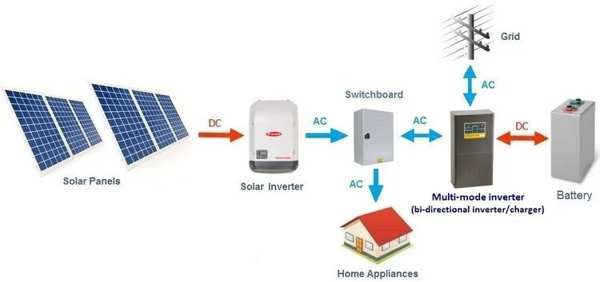
深入潜水: 四季气候的尺寸
这是我们在GYCX太阳能上尺寸尺寸的太阳能电池阵列的方式:
- 能量补充: 我们需要恢复您每天使用的能量. 对于 4.8 kWh电池使用 90% 其容量, 那是关于 4.3 千瓦时.
- 峰值太阳小时 (PSH): 这是关键变量. 在韩国, 随着季节的变化. 你可能会得到 4.5-5 夏天的PSH, 但只有 2.5-3 冬季的PSH. 我们通常会根据全年平均或春季/秋季价值大小尺寸 (例如, 3.5 - 4 PSH) 确保一年中大部分时间充足.
- 系统损失: 我们解释了面板热量损失的能量, 接线, 和逆变器/电荷控制器效率 (通常为a 15-25% 损失因素).
- 计算:
- 所需的太阳能 (千瓦) =需要的每日能量 (千瓦时) / (峰值太阳小时x效率系数)
- 例子 (基于保守派 3.5 PSH):
4.3 kWh / (3.5 hours x 0.80 efficiency) = 1.54 kW (1540 Watts) - 这意味着
1540W / 400W per panel ≈ 4 panels. 为了安全起见,即使在不太完美的日子里也要确保充电, 我们可能会推荐 5 或者 6 面板.
GYCX太阳能故事: “首尔的客户担心冬季为其48V电池系统充电. 我们根据冬季较低的夏日数据设计了它们的阵列, 确保即使在晴朗的冬天, 他们的电池会收到有意义的充电. 正是这种特定于气候的计划使系统全年可靠。"
我可以在48V系统上使用12V太阳能电池板吗?
您可能可以访问一些标准的12V太阳能电池板,并希望使用它们为您的新产品充电, 更高效的48V电池库. 这可能, 还是他们不兼容?
是的, 您可以在48V系统上使用12V太阳能电池板, 但是只有正确的配置. 你 必须串联12V面板 将其组合电压提高到足够高的水平以充电48V电池. 此外, 你 必须使用高质量的MPPT (最大功率点跟踪) 太阳充电控制器, 可以有效地管理面板和电池之间的电压差.
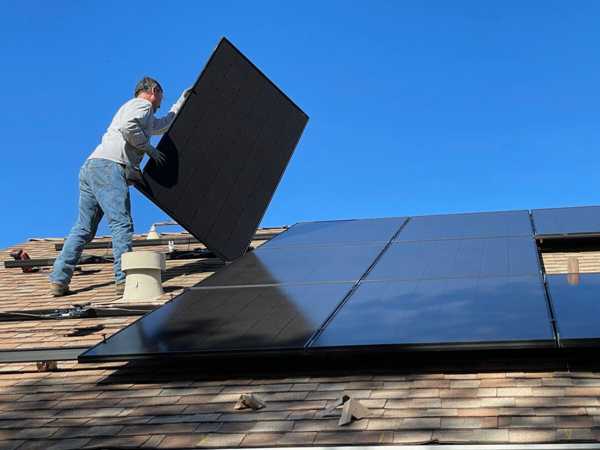
深入潜水: 兼容的关键
这是使这项工作需要的:
- 面板的系列连接: 为48V电池充电, 您的太阳能阵列需要产生明显更高的电压 (通常60V或更多). 一个“ 12V”" 面板通常具有最大电源电压 (电压) 大约18V.
- 所以, 您至少需要连接 四个相同的12V面板串联 (正对负面) 实现合适的系统电压 (4 面板X〜18VMP = 〜72V).
- MPPT电荷控制器至关重要:
- 便宜的PWM (脉冲宽度调制) 无法使用控制器. 它要求面板电压非常接近电池电压.
- 一个 MPPT控制器 是精致的DC-DC转换器. 它可以从您的串联面板中占用高压 (例如, 72V) 并有效地“下台" 为48V电池的正确充电电压, 在此过程中捕获面板的最大功率.
- 专业方法: 在技术上可以使用12V面板, 48V电池的现代系统设计通常从一开始就使用高压面板 (例如, “ 24V" VMP为30-40V的面板或标准60/72细胞住宅面板). 仅连接其中两个串联更简单,而且通常更有效.
这突出了系统设计的重要性. 在GYCX太阳能, 我们确保每个组件, 从太阳能电池板到电荷控制器 48v 机架安装电池, 非常适合最佳安全, 表现, 和效率.
服务器架电池是现代的基石, 可扩展的能量存储. 了解如何配置, 收费, 和大小在一个周围的系统 48V标准1 是解锁其利益的关键. 通过使用专用的48V模块, 您可以简化安装并增强安全性, 为您的 能源独立2.
如果您对设计自己的48V能源系统有疑问,或者想了解有关我们的专业机架安装电池解决方案的更多信息, 我们在GYCX太阳能的专家团队准备帮助. 与我们联系以进行咨询!
